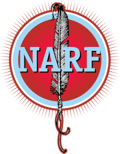By: Alice Walker
July 21, 2025
Published as part of The Headwaters Report
Since 1978 with the enactment of the Ak-Chin Indian Community Act of 1978, Pub. L. No. 95-328, Congress has approved thirty-five Indian water rights settlements and enacted them into law. In addition, four Indian water rights settlements have been approved administratively by the United States Departments of Justice and Interior. As of June 2025, twelve Indian water rights settlements are pending approval by Congress. These settlements represent a historically high number of simultaneously pending settlements, reflecting both a significant backlog awaiting congressional authorization and the ongoing efforts to resolve Tribal water claims through negotiated agreements rather than litigation.
On August 6, 2025, the Native American Rights Fund (NARF) and the Western States Water Council (WSWC) will once again host the biennial Symposium on the Settlement of Indian Reserved Water Rights Claims (Symposium), where Tribal, State, and Federal representatives will discuss current issues regarding Tribal water rights settlements, including congressional and administrative positions on settlements, Tribal and state perspectives on the settlement process, and insights on the implementation of settlements. The Symposium will be held virtually and registration is free. More information and the registration link can be found here.
Water Rights Settlement Background
The resolution of Indian water rights claims through coordinated legal settlement is the favored process to adjudicate Tribal claims, a policy consistently upheld by the Department of the Interior since 1990 as preferable to protracted litigation. This comprehensive process involves multiple steps: pre-negotiation, negotiation, settlement, and implementation, with Federal, Tribal, State, and local stakeholders all playing crucial roles. Critical in this process is the ability of Tribal Nations to get the Departments of the Interior and Justice to agree to engage in the settlement process through a federal settlement team. This can be achieved through a direct, formal request to the Department of the Interior from Tribes and non-federal parties, or it can occur through active water rights litigation that then leads to the formation of a settlement team. These federal teams – which can be negotiation, assessment, or implementation teams – typically include representatives from the Bureau of Reclamation, Bureau of Indian Affairs, Fish and Wildlife Service, Office of the Solicitor, and the Department of Justice, working collaboratively to reach mutually beneficial outcomes. Ultimately, most negotiated settlements require congressional approval and often include significant federal funding for infrastructure and other resources to ensure Tribes can effectively utilize their quantified water rights. Dive deeper into Indian Water Right Settlements here.
The core elements of an Indian water rights settlement are multifaceted and address needs of all parties involved.
Elements of Indian Water Right Settlements:
- Quantification of Tribal water rights, where settlements specify the exact amount of water to which a Tribe is entitled, both now and in the future, encompassing federal reserved (Winters) rights, aboriginal water rights, and/or negotiated amounts of water to serve Tribal interests;
- An enforceable decree or agreement, typically a binding court decree, to ensure ongoing compliance by all parties;
- Funding provisions, which often involve federal and state funding for water infrastructure projects, such as pipelines or treatment plants, and/or trust funds for Tribal water development;
- Water marketing provisions, allowing Tribes to lease, sell, or otherwise market their water rights, sometimes even off-reservation, with explicit congressional approval;
- Waiver provisions, where Tribes typically agree to waive further claims to water rights beyond those recognized in the settlement, providing certainty for non-tribal users but occasionally raising concerns about Tribal sovereignty;
- Resource management agreements, which may address the management, allocation, and protection of water resources, sometimes including environmental restoration or cultural resource revitalization;
- Clear water administration, detailing the roles for tribal, federal, and sometimes state agencies; and, in some cases, the necessity of state legislation to enact or amend laws for settlement implementation.
- Approval and enforcement, following congressional and any relevant court approval, implementation and oversight are carried out by federal agencies, such as the Department of the Interior and Bureau of Indian Affairs, including construction oversight and fund management.
- Project based and fund based, settlements can be project-based (focused on building specific infrastructure), fund-based (establishing trust funds for Tribal use), or commonly, hybrids of both approaches.
Current Status of Tribal Water Settlements (as of Summer 2025):
- The pending twelve settlements represent completed negotiations among Tribal Nations, the federal government, states, and non-Indian stakeholders, but require congressional authorization to become law and unlock federal funding for infrastructure and implementation.
- The settlements remain in various stages of the legislative process—some have been introduced as bills and referred to committees but have not yet advanced to the stage where a vote on the bill will occur.
- Examples of pending settlements include the Tule River Tribe Reserved Water Rights Settlement Act of 2025 (S.689/H.R.8920), which would settle the Tule River Tribe’s claims, and the Northeastern Arizona Indian Water Rights Settlement Act of 2025 (H.R.2025), which would resolve claims for the Navajo Nation, Hopi Tribe, and San Juan Southern Paiute Tribe.
Key Points:
- Congressional approval is essential for these settlements because they typically require federal appropriations for water infrastructure, trust funds, and other implementation measures, constituting changes of law, which only Congress can do.
- Until Congress acts, the settling Tribes do not have access to the full benefits of their negotiated water rights, including funding for projects that would deliver actual water to their communities.
- The timeline for congressional action is uncertain, as each settlement must navigate the legislative process, which can involve hearings, amendments, and negotiations among multiple parties.
In summary, the twelve pending Indian water rights settlements remain in legislative limbo until Congress acts on them. There have been past efforts to expedite Indian water rights approvals, but no broad, uniform law has been enacted specifically to accelerate the approval process for all pending settlements. For example, the Biden Administration encouraged Congress to consider mandatory funding for pending Indian water rights settlements, aiming to streamline implementation and avoid delays due to annual appropriations battles. This approach was included in the 2025 President’s Budget and the Bipartisan Infrastructure Law, and some pending bills now propose mandatory funding as part of their provisions. However, it is not clear how these efforts will fare in the current administration and Congress.
In 2023, Congress passed the Colorado River Indian Tribes Water Resiliency Act, which authorized Tribes to lease water rights, setting a precedent for more flexible tribal water management. While this authorization did not directly expedite settlement approvals, it signals a willingness in Congress to address Tribal water issues with bipartisan support and could pave the way for broader reforms. Such reforms are particularly important with respect to the Colorado River and the ongoing efforts to renegotiate the river’s management and distribution among the United States, seven states and thirty Indian tribes.
Despite these efforts, there is no single legislative initiative that universally expedites all Indian water rights settlements. Progress continues on a case-by-case basis, such as with the Colorado River Indian Tribes described above, with historically strong executive branch support for negotiated settlements and calls for more predictable funding mechanisms to reduce bottlenecks in the approval and implementation process.
Key players in Indian water rights settlements include:
- Tribal Nations: Federally recognized tribes are central parties, as the settlements are designed to quantify and secure their water rights.
- Federal Government: The United States government is involved due to its federal trust responsibility to Tribes. Key federal entities include:
- Department of the Interior (DOI): Leads negotiations and policy through the Secretary’s Indian Water Rights Office (SIWRO) and the DOI Working Group on Indian Water Settlements.
- Bureau of Indian Affairs (BIA): Provides technical, factual, and funding support for tribal water rights claims.
- Bureau of Reclamation: Implements federally approved water projects associated with settlements.
- Department of Justice (DOJ): Participates in negotiations and legal matters.
- Office of Management and Budget (OMB): Reviews and clears cost and policy aspects of settlements.
- State Governments: States are often parties to negotiations, as water rights are managed at the state level and settlements affect state water allocations.
- Local Water Districts and Private Water Users: These stakeholders may be included when their existing rights or water access could be affected by tribal settlements.
- Congress: Must approve most settlements through legislation, especially when federal funding or changes to federal law are required.
Each settlement involves negotiation among these parties, followed by congressional approval and, in some cases, judicial confirmation if there are ongoing court proceedings. For example, the water rights adjudication in State of New Mexico ex rel. State Engineer v. Aamodt, 66 cv 06639 (D.N.M. filed 1966), was initially resolved by settlement among the litigants and stakeholders in 2006. The Aamodt Litigation Settlement Act, Pub. L. 111-291 (Dec. 8, 2010), as amended, Pub. L. No. 116-260 (Dec. 27, 2020), approved the settlement with some required amendments which the parties made in 2012. The final decree was entered by the federal district court in July of 2017. Settlement implementation remains ongoing. More on the Aamodt settlement will be shared at the 2025 Water Settlements Symposium.
Funding for the twelve pending settlements remains a significant hurdle in Congress, in which the settling Tribes seek a combined $12 billion to address their water needs. Federal funding for settlements generally has been provided through discretionary appropriations; Congress also has approved mandatory funding for some settlements. The Reclamation Water Settlements Fund was created in 2009 under Pub. L. No. 111-11 as a source of additional funding for existing and future settlements. The Reclamation Fund is scheduled to provide $120 million per year in mandatory funding for settlements through FY2029, with the availability of these funds set to expire in FY2034. In 2021, Congress approved and appropriated $2.5 billion for another Indian water rights fund, the Indian Water Rights Settlement Completion Fund, in the Infrastructure Investment and Jobs Act, Pub. L. No. 117-58. Whether Congress will agree to appropriate the requested $12 billion to supporting the presently-pending settlements is unclear. But without funding from the federal government (in addition to local cost-share contributions from states and other settling parties), most if not all of the settlements cannot come to fruition because the Tribes’ needs cannot be met without those funds for infrastructure and water development purposes.



